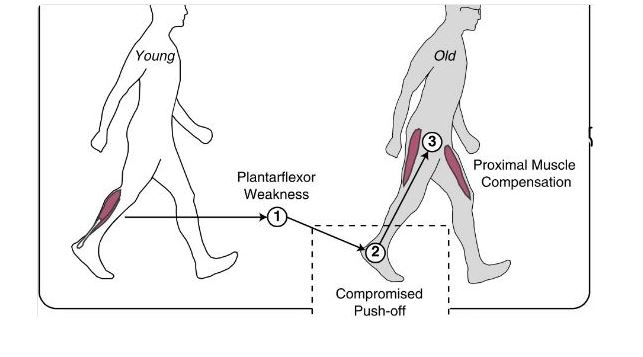restore: the legs program
calf strength
two movements to strengthen the lower legs:
Of all of the areas of a runner’s body, the lower-leg is among the most likely to be injured, especially if you’re getting a bit “long in the tooth,” so to speak.
Whether it’s Achilles issues, a calf strain, or a chronic injury in the foot such as plantar fasciitis, the lower leg and calf is typically a big weak link. If you’re struggling with an injury in this area, it’s likely it won’t go away quickly. The key is to avoid one in the first place!
If you’re following along, and because you obviously know the title of this page – you’re likely getting the picture.
- The lower leg is one area of the body where many of the most common running injuries occur.
- The muscle group that has been shown in research to become dramatically weaker as we get older, is the calves.
Muscle disappears fast if we don’t train to strengthen it. There’s truth to the adage: use it or lose it. The MOST important thing you can do to keep it from going away is strength train.
If you’re interested, check out a great Ted-Talk by Dr. Brenden Egan called “Muscle Matters,“ where he describes in great detail the importance of maintaining muscle and staying strong for our overall health and well being.

For a long time now, research has demonstrated conclusively that as we age, the muscles that we use to push off with during each stride, get progressively weaker.
As they weaken, other areas of the body have to compensate to make up for the lack of strength.
Compensation, which means one part of our body trying (or being forced) to do the job of another part of our body, is our enemy.
Do you want to run faster and become even more durable? Ridding your body and your training of compensation where you can, will definitely help!
Virtually every runner needs to be doing calf raises consistently, and progressing them. And not just the straight leg variety…
Straight leg calf raises importantly strengthen the larger gastrocnemius muscle. In addition, done with a bent knee, we can also strengthen the deeper soleus muscle, which lies under the gastrocnemius.
Straight Leg Calf Raise
Bent knee calf raises are equally important to do, yet they are typically done less. The reason?
In my experience (unless you have access to one of those machines sometimes found in a gym specifically for this exercise), they’re hard to load.
The reason? It takes a lot of weight to get adequate resistance. And even when you load up with dumbbells or kettlebells, it’s difficult balancing 50 or more pounds on your lap while doing a raise.
Here’s a solution – in the 2nd half of the below video, you’ll see a version that uses a nylon strap for resistance.
For a strap, I recommend using a 2-inch strap with a buckle, made of polyester webbing. You can CLICK HERE to grab one from a company called Strap Works – they’re inexpensive and well made. You’ll definitely want to get an X-LARGE so you have plenty of length for adjustments.
Bent Knee Calf Raise
When placing the strap under your foot, make sure it is under the front “ball” of your foot, so that it remains in place as you press up.
If you place it in the arch, then it will move as you press up, reducing the potential strengthening benefits you will receive.
